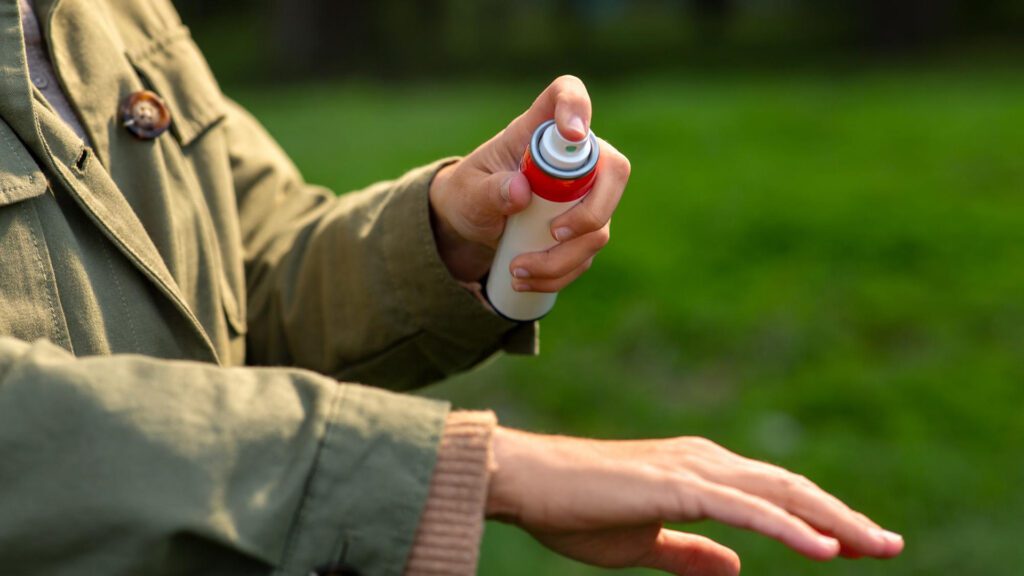Sunscreen and insect repellent don’t go together. Both have completely entirely different functions. It’s not me saying it; read the Center for Disease Control and Prevention (CDC) and Environmental Protection Agency guidelines. They clearly state that using a combination of insect repellent and sunscreen is strictly prohibited.
If you still need clarification, don’t worry. In this article, you’ll find all the answers to the question regarding your concerns. You can find a method for applying insect or bug repellent that benefits you rather than damages your skin.
Why Is Using Sunscreen and Insect Repellent Together Not Advised?
When I read the labels behind both the sunscreen and bug spray, I found that the formulations were different. I know you might be saying that this is common knowledge. Both formulations should have been different. What I mean is both formulations, if combined together, might produce very bad results.
Difference Of Chemicals
Insect repellants contain DEET (N,N-Diethyl-meta-toluamide) and sunscreen contains SPF. DEET causes the SPF effectiveness to go down in blocking UVA and UVB rays from the sun.
It is also observed that sunscreen increases the absorption of DEET into your skin. The absorption leads to toxicity, especially in children.
Difference Of Usage
Sunscreen and insect repellent both are applied in totally different ways. Sunscreen needs to be reapplied every two hours. If you are sweating so much, you can reapply in one hour. Whereas insect repellent can be reapplied after 5-6 hours.
Difference Of Application
The CDC recommends that you apply sunscreen first. I suggest that you apply it 30 to 45 minutes before going outside. For efficient sun protection, sunscreen needs time to be absorbed into your skin, and protect against harmful UV rays.
Insect repellent should be applied only to exposed skin. I advise you to never apply it directly. You might pour out a lot. Take it out onto your hands first. Then, slowly start rubbing it on exposed areas.
When applying onto your face, pat your hands gently on the cheek and forehead. Don’t apply it near the eyes and nose. Don’t use it on children under two months.
What To Look For In A Sunscreen And Insect Repellent?

When choosing a sunscreen, look for the Sun Protection Factor (SPF). If it is 30 or above, go for it. I look for sunscreen products containing titanium dioxide or zinc minerals which don’t get absorbed into skin. These type of sunscreen offers optimal protection specially to children.
In an insect repellent, check out the DEET concentration and Picaridin. If the repellent contains more than 30% DEET, it’s better to avoid it.
How To Remove Sunscreen or Bug Spray?
When indoors, wash off the insect repellent using soap and water. It is better to wash the clothes, too. If you correctly apply the sunscreen, it gets absorbed, so you don’t need to wash it off.
Why Is Applying Insect Repellent And Sunscreen Important?

When you go hiking or do any other outdoor activities, safety precautions are important. Too much sun exposure might cause sunburn. If your case gets worse, it might lead to skin cancer later in life. Applying sunscreen keeps your skin safe and minimizes the dangers of exposure to ultraviolet rays.
It’s not just the sun that is dangerous for you. When you are outdoors, you are exposed to various biting insects and ticks. These creatures can transmit West Nile virus and Lyme diseases, and increase the risk of Zika virus and yellow fever.
Alternatives of Using Sunscreen or Insect Repellent
Some simple tips can help you stay safe outdoors without using sunscreen or insect repellent. Take a few extra minutes to cover your body.
Wear long sleeves and pants. I sometimes tuck pants into socks. Keep a water bottle to stay hydrated in the scorching heat.

